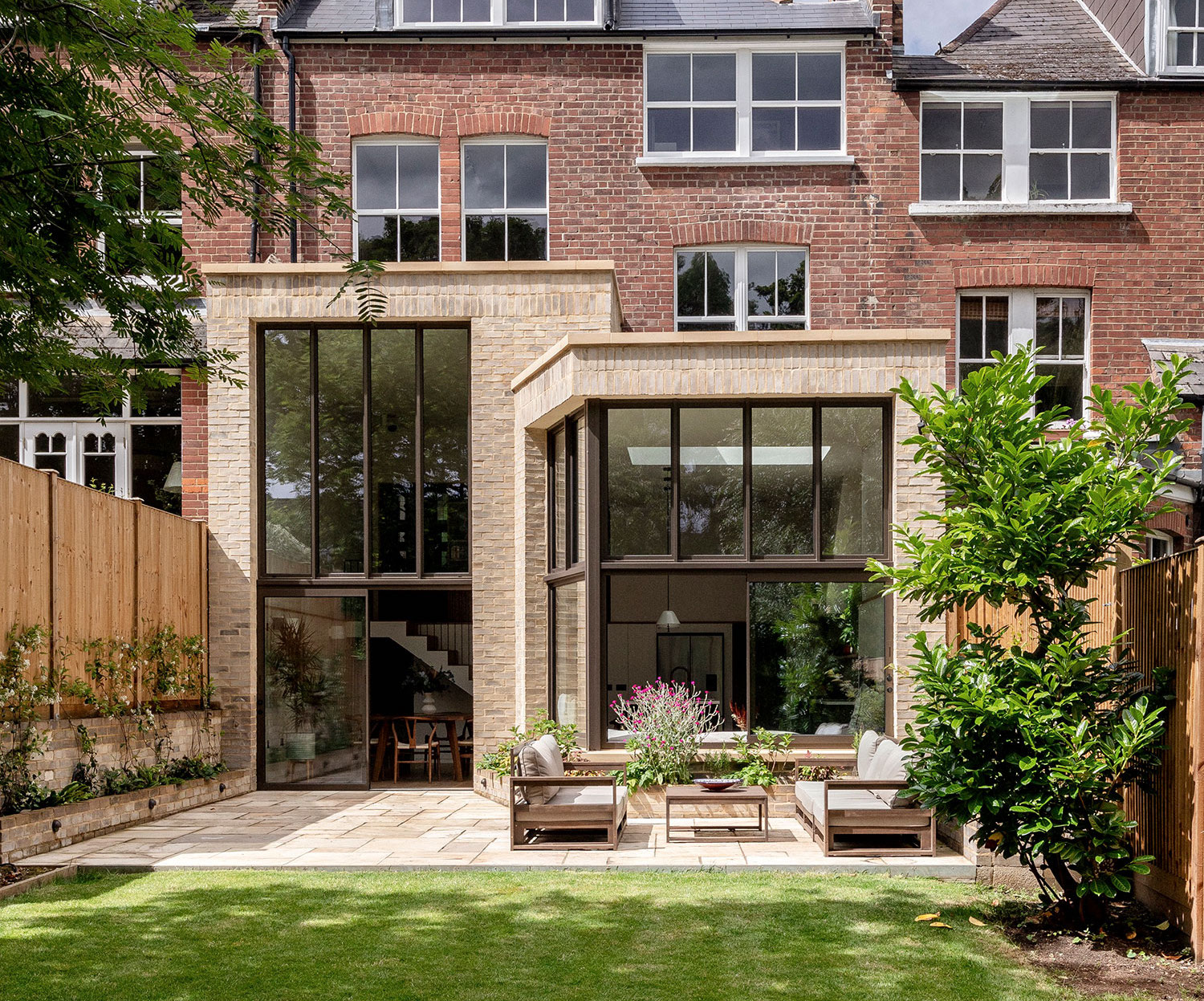Emile Eve Architects has added a double-height atrium in an extension to a home in North London.
Photos
Taran Wilkhu
Nestled in into the Highgate Conservation Area in London, Hackney studio Emil Eve Architects has toyed with scale and light to revamp this five-storey Edwardian terraced home.
The biggest intervention to the property is the addition of a double-height atrium that establishes a series of elegant vertical connections, allowing light and scenic views to permeate through the entire home. Sat on a sloping hillside, the geometric brick extension adopts a stepped design, providing indoor and outdoor living areas.
“It’s a big house and the central spaces had been very dark. The works open up vertical connections throughout the building and allow light and views to unfold throughout the home,” Emma Perkin, director at Emil Eve Architects told Architecture Today. “As well as providing views to the garden from two levels, the expansive glazing and additional rooflights, flood the space with natural light. In the main house, new openings to the original staircase, now topped with a large roof-light, provide additional vertical connections and bring light into what was the darkest part of the home.”


The practice was commissioned to transform the weary terraced house into a welcoming, open-plan family home for a young couple and their two children. The original Highgate House featured a tiered layout of smaller, separate rooms typical of its era. A labyrinthine floor plan necessitated occupants to navigate through multiple stairs across different levels to access the expansive rear garden — a flaw the architects promptly addressed.
“We essentially removed the floor of the reception room and dropped down into the cellar space below to be at the same floor level as the kitchen,” added Perkin. “Due to the stepped nature of the house, we were able to work with what was there rather than choosing resource-intensive construction. Despite appearances the building’s footprint has not significantly increased, with the clever reworking of levels avoiding extensive excavation and underpinning.”
Employing that strategy, the studio made use of the property’s five stories to create a zoned floor plan, allowing communal family spaces to be distinct from those for parents and children to work, rest, and play.
Upon entry, visitors are welcomed by a spacious hallway adorned with traditional details, leading to an intimate sitting room. A sliding door reveals the expansive atrium extension, allowing the bright open space to be seamlessly integrated into the rest of the house, giving the atrium a Tardis-like feel.


The wallpaper featured in the photo on the left is from CommonRoom. Its design comes from Arts & Crafts architect, CFA Voysey and is from a watercolour drawing done in 1918, found in the archives of the Victoria & Albert Museum.
Textural materials used within the house create warmth within, with varying finishes further delineating spaces inside.
“The clients wanted a calm and peaceful material palette that worked with the character of the Victorian property,” continued Perkin. “In the extension, a slender timber datum line extends from the ground floor plane, wrapping around the new living space, and cleverly integrated as open plan kitchen shelving. This line marks the pre-existing ground floor level, bordering slender vertical timber battening that anchors and gently grounds the generous space. Soft lime plaster gives a natural finish and texture. In the ensuite bathroom ash joinery is paired with stone and ceramics to achieve a timeless elegance. Wide plank oak flooring offers a warm footing against soft white tones in the social spaces, with rich greens and pale, natural pinks gradually introduced as one moves up the home.”
The new lower ground floor unveils a fresh perspective, leading to a redesigned patio and garden, which has been surrounded by brick planter beds. When viewed from the garden, the brick extension presents itself as two distinct volumes — a towering rectangular structure juxtaposed against a geometric extrusion that is a nod to the original rear bay windows.
On the upper levels, additional vertical connections are introduced through new openings in the original staircase, crowned by a sizable roof-light, flooding the deepest corners of the home with natural light. The first floor has a primary bedroom and bathroom suite, accompanied by a dressing room and office, while the second floor accommodates a playroom, family bathroom, and two children’s bedrooms, with a repurposed attic volume serving as a hideaway area.
More images and drawings
Credits
Architect
Emil Eve Architects
Structural engineer
Price & Myers
Main contractor
Evoke Projects Ltd
Mechanical and engineering advisor
Inspired Dwellings
Approved inspector
Quadrant Building Control
Lighting
Dyke and Dean, Lampsy, Astro, Dowsing + Reynolds, Flos
Kitchen
Evoke
Flooring
Havwoods
Glazing
ID Systems
Timber joinery
Evoke Project Ltd
Tiling
Parkside, Mandarin Stone
Concrete sink
Kast
Source: Architecture Today




